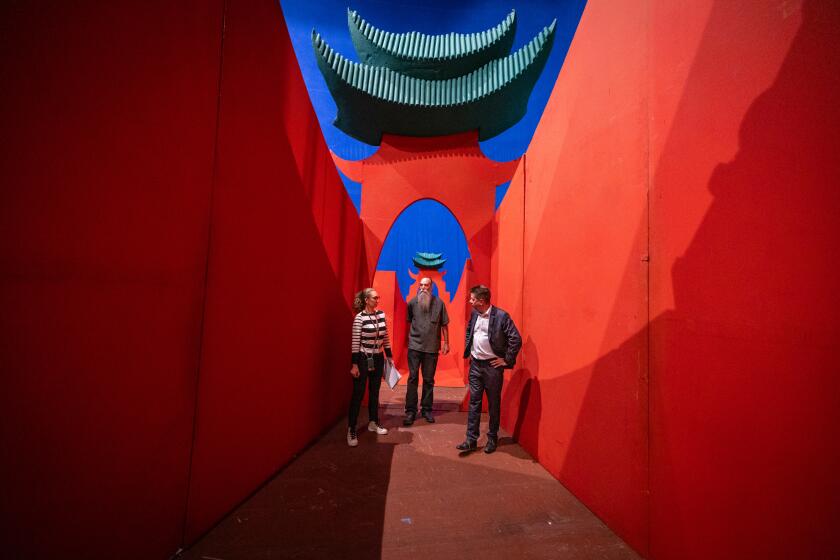MUSIC REVIEW : PIANIST BROWNING PLAYS WITH PACIFIC SYMPHONY
There were differences of opinion in public announcements about what concerto pianist John Browning would play with the Pacific Symphony at the Performing Arts Center this week. But Wednesday night, Browning clearly had no doubt about his chosen vehicle, the Prokofiev Third.
As usual, he proved vigorously direct, his tone lean and his touch crisp. Unobtrusiveness is an important part of Browning’s talents. The notes seem to play themselves, without artificial stimulation, yet without sounding in any sense merely mechanical.
The passage-work and motor impulses received better sonic value than did the moments of introspective lyricism. But this was not a performance of episodes. Even the Variations were neatly tied together, in a comprehendable, utterly convincing package.
Conductor Keith Clark maintained a generally tight accompaniment, both pert and powerful in its own right. Indeed, at times it overwhelmed Browning’s more fastidious efforts. The Prokofiev spirit, however, was well served.
As with the concerto repertory, there was some disagreement about which of Roy Harris’ symphonies the orchestra would play. Preseason publicity slated No. 7; public announcements this week listed No. 5, and No. 3 was actually performed.
No matter, except perhaps to Harris aficionados. The Third is probably the best-known of Harris’ symphonies, but Clark and the Pacific Symphony are not just dabblers in this repertory. They have a longstanding commitment to American music in general and Harris in particular.
This music brings out the best of both conductor and orchestra. Harris’ surging lines elicited spirited, athletic playing, confidently molded by Clark. The remorseless finale shook Segerstrom Hall with a furious grandeur, capping a bravura performance of technical brilliance and emotional sweep.
Clark and company returned from intermission for an epically wimpy account of Beethoven’s Fifth Symphony. The conductor appeared to intend something brisk and Classical, but achieved only a stodgy sense of routine.
As exceptions, the Andante’s opening theme was gloriously played--although the bass pizzicati proved inaudible--and the Finale had a measure of leaping exuberance. Even there, however, limp transitions undercut the effect.
More to Read
The biggest entertainment stories
Get our big stories about Hollywood, film, television, music, arts, culture and more right in your inbox as soon as they publish.
You may occasionally receive promotional content from the Los Angeles Times.






